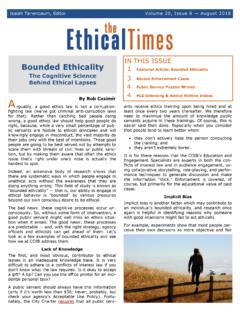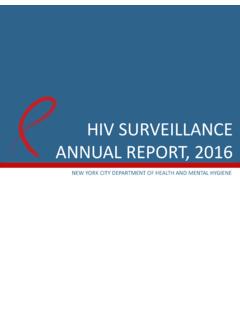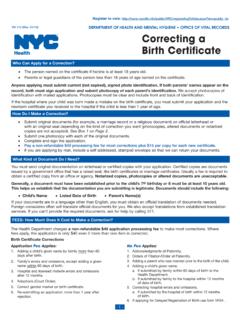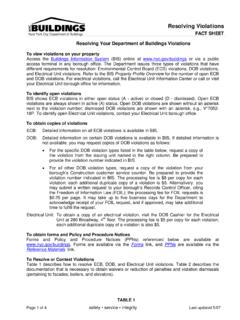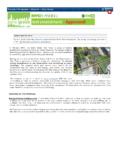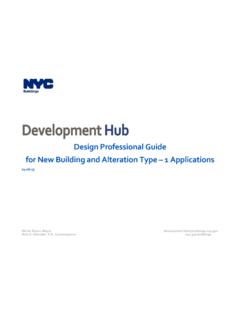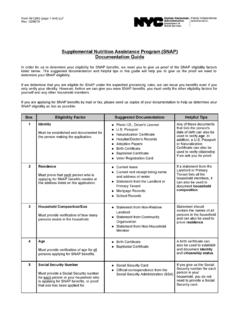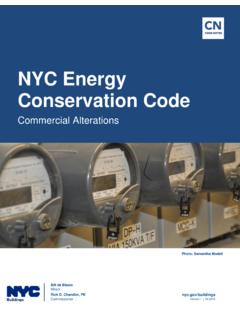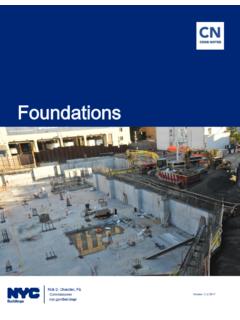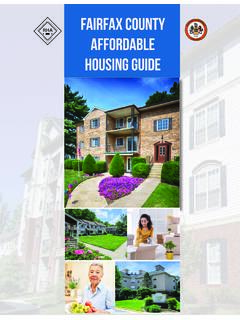Transcription of New York City Senior Housing Options
1 Alternatives in Senior Housing Queens Please be aware that there are waiting lists at many low- and middle-income residences. Contact individual developments for further information and applications. List of TABLE OF CONTENTS Overview Facilities or Residences *. Senior Housing 1-5 10-18. Adult Care Facilities 1-4 10-14. Adult Homes 1-2 10-11. Enriched Housing 2 12. Assisted Living Programs (ALPs) 2 12-13. Assisted Living Residences (ALRs) 2-4 14. Home Sharing/Shared Living Residences 4-5 15. Section 202 Supportive Housing for the Elderly Program 5 16-18. Senior Residences with Services Market Rate 5 5. Affordable Housing Programs Designed for the General Public 6-9 19-22. Mitchell-Lama Housing (NYC- and/or NYS-Supervised) 6 19.
2 NYCHA Public Housing 6-7 19. Project-Based Section 8 Buildings/the Section 8 Program 7-8 20. Residences Subsidized Through Other Housing Programs/. 8 21. Funding Sources Single Room Occupancy Hotels (SROs) 8 N/A. Transitional Housing and New york city Department of 9 22. Homeless Services (DHS) Shelters (Emergency Housing ). Housing Preservation and Development (HPD) . 10 10. city -Subsidized Opportunities Housing Benefits Senior Citizens Rent Increase 11 11. Exemption program (SCRIE). Legal Assistance - Queens 11 11. * N/A denotes there are no facilities or Senior -type residences for the marked Housing category in the current borough, or that DFTA does not have a list, and the listing for this Housing category can be found in another borough version of Alternatives in Senior Housing .
3 Please note, there will not be a separate, duplicate listing under the Adult Homes or Enriched Housing category, if all beds at the facility have been certified as ALP (Assisted Living Program) and/or ALR (Assisted Living Residence) beds. Two transitional residences for seniors have been identified for the entire city , both of which are located in Manhattan. This Manhattan list has been incorporated into every borough version of Alternatives in Senior Housing .. For the locations of New york city Department of Homeless Services (DHS) shelters and the population each serves, please call 311. Senior Housing Overview Adult Care Facilities Adult Care Facilities (ACFs) offer temporary or long-term Housing in combination with a package of services, which may include housekeeping, laundry, congregate meals, socialization and recreational activities, arrangement of medical visits, medication distribution, personal care ( assistance with bathing and dressing), supervision, and/or case management.
4 Services provided differ amongst the residences, depending on the type of Adult Care Facility and the residence itself. Periodic health inspections and surveys are conducted by the New york State Department of Health. Adult Care Facilities provide Housing and services to at least five clients, all of whom must be 18. years of age or older; therefore, younger adults with physical and/or mental impairments due to disease or injury may also be residents. In New york city , the four major types of Adult Care Facilities are adult homes, enriched Housing , Assisted Living Programs (ALPs), and Assisted Living Residences (ALRs). If placement within a facility is considered, a physician can assess an individual's overall health condition and level of functioning, and identify the type of residence that is appropriate for the patient's needs.
5 Following is a brief summary/description of these four ACF models. Adult Homes Adult homes provide 24 hours of supervision, three congregate meals a day, and a private or semi-private bedroom. Adult homes may also serve mentally ill adults. To be admitted a client cannot be chronically bedfast and cannot be 1. incontinent or have unmanageable incontinence. The resident should be able to walk without the assistance of another person or be able to transfer from wheelchair to bed without the assistance of another person. Residents cannot require intermittent or ongoing skilled nursing care that exceeds the level offered by home care service agencies. Additional admission and retention criteria for adult homes are posted on the New york State Department of Health's website under Admission/Discharge Criteria.
6 For Assisted Living. Enriched Housing Enriched Housing programs serve elderly, usually 65 years of age or older, in a community-integrated setting. Enriched Housing programs offer greater independence than adult homes. The basic, private residential unit is an efficiency apartment and each apartment is equipped with a kitchen. The law only mandates part-time supervision and less than three meals a day, but most operators choose to provide 24 hours of supervision and all meals. The program does not serve persons with mental disabilities or behavior that may adversely affect other residents or staff. Assisted Living Programs (ALPs). New york State's Assisted Living Program (ALP) provides home health care ( physical, speech, and occupational therapy) and nursing care to residents who are nursing home-eligible.
7 Clients are medically stable, do not require continuous medical attention, and are not chronically chairbound or bedbound. ALPs are less restrictive and less expensive than nursing homes. To operate an assisted living program, a facility must first be certified as an adult home or enriched Housing program. Assisted Living Residences (ALRs). Introduced in 2004, Assisted Living Residences (ALRs) follow regulations 2. established for adult homes or enriched Housing programs, plus an additional set of requirements. Assisted Living Residences (ALRs) are classified as Basic Assisted Living Residences, Enhanced Assisted Living Residences (EALRs), or Special Needs Assisted Living Residences (SNALRs). ALRs provide 24-hour supervision and private quarters consist of a single or half- shared bedroom, or an apartment .
8 Individualized Service Plans (ISPs) are required to be prepared/reviewed at least once every six months for each resident of the facility with input from the physician, patient and his/her representative, and home health care agency, if appropriate. ISPs assess changes to a client's needs, identify services to be provided and how they will be delivered, and list staff responsible for providing those services. The admission/retention criteria for Basic ALRs are the same as for adult homes or enriched Housing . Please refer to the outline under Adult Homes above. Individuals who need assistance from another person to walk or to transfer from bed to wheelchair, or who have unmanageable incontinence, may be admitted to an Enhanced Assisted Living Residence (EALR), which is an ALR with an additional layer of certification.
9 EALRs are required to provide nursing services to its clients. ALRs cannot admit individuals who have 24-hour skilled nursing or medical needs that would require placement in a higher level setting ( hospital, nursing home, etc.), however, if the client is living in an ALR that has EALR certification, he/she can be retained if all of the following conditions are met: the physician and the care team determine that the client's needs can be satisfactorily and safely addressed in the EALR, the patient agrees to hire additional medical, nursing, or hospice staff for the increased care needs, the operator consents to the responsibility of coordinating care provided by both the additional personnel (nursing, medical, etc.) and his/her own staff, and the patient is otherwise eligible to live at the residence.
10 Special Needs Assisted Living Residences (SNALRs) are designed to serve individuals with Alzheimer's disease, other dementia, or other special 3. needs. Environmental modifications, staff members with additional qualifications and training, specialized programs, and plans of action for managing challenging behaviors distinguish SNALRs that have a specialty in dementia from other types of facilities. Any Adult Care Facility advertising or marketing itself as having specialized services for Alzheimer's patients or persons with other special needs is required by law to obtain certification as a SNALR. Facilities can obtain separate, dual certification as both an EALR and SNALR. Depending on the operator, SSI Congregate Care Level III or Social Security may be accepted as payment in full for base-rate room and board at adult homes, enriched Housing programs, Assisted Living Programs, or Assisted Living Residences.

